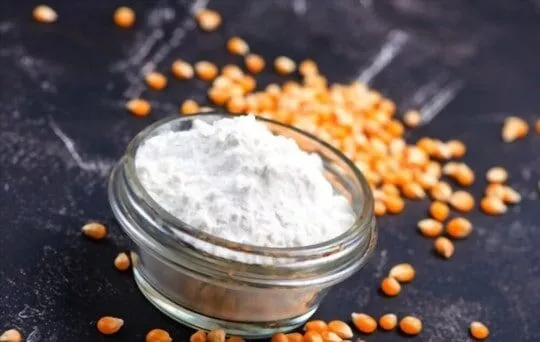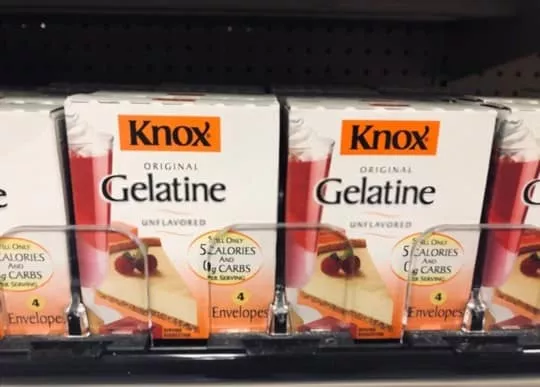Every chef knows the importance of a good thickening agent – it’s the difference between a flop and a success.
The most common option is flour, but what other options are there?
What are the best thickening agents for cooking and baking that aren’t flour? Cornstarch is the most popular alternative to flour, as it has twice the thickening power of all-purpose flour. However, you can also thicken sauces and gravies with arrowroot powder, tapioca starch, potato starch, or even oats.
Depending on your needs and preferences, try adding one of these ingredients to achieve your desired consistency.
Are you looking for a healthier alternative to thicken your recipes without using flour? Look no further! Here we explore ten of the best thickening agents for cooking and baking that don’t require flour.
What are Thickening Agents?

Thickening agents are substances that are added to food to increase its viscosity, or thickness.
They are commonly used in cooking and baking to improve the texture and mouthfeel of a dish, as well as to help bind ingredients together.
Thickening agents can be natural or synthetic, and they work by absorbing water or by forming a gel or paste.
Some common natural thickening agents include arrowroot powder, cornstarch, and tapioca starch.
These ingredients are derived from plants and are often used in gluten-free cooking and baking as a substitute for wheat flour.
They work by absorbing water and forming a gel-like substance that thickens the liquid.
Synthetic thickening agents, such as xanthan gum and guar gum, are often used in commercial food production.
These ingredients are derived from plant sources but are modified to increase their thickening properties.
They are often used in processed foods, such as sauces, dressings, and ice cream, to improve their texture and stability.
10 Thickening Agents for Cooking and Baking That Aren’t Flour
When cooking and baking, one often needs a thickening agent to create the desired consistency. Flour is a common choice, but there are many other options that can offer different flavors and textures while eliminating gluten from the equation.
Here are ten great thickening agents that can help bring your culinary creations to life:
1 – Arrowroot Powder

Arrowroot powder is a white powder derived from arrowroot, a tuberous plant native to tropical regions. It has long been used as a thickener in various cuisines for its superior binding properties.
This versatile powder can be used to thicken sauces, soups, and stews without causing lumpiness or altering the color of your dishes.
Arrowroot also adds an interesting flavor profile compared to traditional flour thickeners and is gluten-free, making it ideal for anyone with dietary restrictions.
2 – Cornstarch

Cornstarch is obtained from corn kernels and is renowned for its ability to effectively thicken sauces and gravies without affecting flavor or texture.
This unique ingredient creates an opaque glossy finish when added to liquid mixtures, providing greater stability than flour-based alternatives.
As it contains no gluten or dairy products, cornstarch can be used by those with dietary sensitivities or allergies.
When using this versatile powder as a thickener, remember that it must first be mixed with cold water before being added to hot liquids in order to prevent clumping.
3 – Agar Agar Powder

Agar agar powder is extracted from seaweed and has been used in Asian cuisine for centuries due to its robust gelling properties.
It not only serves as an effective thickening agent but also resists temperature changes after setting, allowing it to maintain its structure even when reheated or frozen.
Agar agar also serves as an animal-friendly alternative to gelatin when creating vegan desserts like puddings and custards.
For best results when using this unique powder as a thickener, mix it with cold liquid before adding it slowly into hot liquids until your dish has reached the desired consistency.
4 – Tapioca Starch

Tapioca starch comes from cassava root and offers similar benefits as cornstarch in terms of thickness without imparting any off flavors or colors onto your dish.
While forms of tapioca have been utilized in various global cuisines since antiquity, modern cooks appreciate its versatility in baked goods while avoiding wheat products altogether due to its gluten-free status.
To use tapioca starch as a thickening agent, simply add 1 tablespoon per cup of liquid before bringing it all up to heat for about 5 minutes until you reach the desired viscosity level.
5 – Psyllium Husk Powder

Psyllium husk powder is made from psyllium seed husks which benefit digestive health by promoting regularity with their high soluble fiber content.
Besides serving as an excellent laxative supplement, psyllium husk powder provides excellent binding abilities when added into liquid dishes such as casseroles or lasagna fillings — making them thicker while avoiding grain-based ingredients like wheat flour entirely due to its gluten-free nature!
To utilize this unique ingredient in your kitchen endeavors simply add 1/2 teaspoon per cup of liquid mixture before cooking it all on low heat until you have achieved the desired outcome you set out for!
6 – Xanthan Gum

Xanthan gum is an all-natural polysaccharide derived from simple sugars, offering a powerful thickening effect.
It’s highly versatile and can be used to thicken sauces, soups, stews, and batters without altering the taste. It’s also a great gluten-free alternative to flour, ideal for individuals with dietary restrictions or allergies.
To use xanthan gum as a thickening agent in cooking or baking, dissolve it in water before stirring into your recipe.
This method helps prevent lumps while ensuring an even distribution of xanthan gum throughout your dish.
7 – Gelatin

Gelatin is another popular thickener used in various dishes around the world. This ingredient is made from the collagen proteins found in animal tissue such as skin and bones.
Its unique texture makes it suitable for creating gels and custards that offer structure and stability to foods like cakes and pies.
To use gelatin as a thickening agent, you must dissolve it in cold water before adding to your recipe.
This helps ensure its uniform distribution throughout your dish while providing incredible structure without altering its flavor profile.
8 – Pectin

Pectin is a complex carbohydrate found naturally in fruits like apples and oranges that offers excellent gelling properties when combined with sugar and acidity.
Its ability to form jams and jellies makes it an invaluable tool for bakers looking to make flavorful desserts or fillings without relying on flour as a thickener.
For optimal results when using pectin as a thickener, mix it with lemon juice or apple cider vinegar before adding it to your recipe at the end of cooking time to avoid denaturing its effects on texture or flavor profile.
9 – Guar Gum

Guar gum is extracted from guar beans grown primarily in India and Pakistan, making this an effective all-natural substitute for traditional thickeners like flour or cornstarch.
Its superior emulsifying properties make it ideal for sauces and dressings while also lending itself well to vegan dishes due to its plant-based origin story.
When using guar gum as a thickener in recipes like soups and sauces, you should add small amounts over time until reaching the desired consistency rather than dumping large quantities all at once — this prevents clumping while avoiding the risk of over-thickening the dish altogether.
10 – Konjac Powder
Konjac powder is derived from konjac root plants native to Southeast Asia that contains glucomannans which help thicken food naturally without relying on artificial additives found with other thickeners such as flour or cornstarch.
It’s most commonly used in Asian cuisine but has become increasingly popular among health enthusiasts seeking an all-natural solution for their culinary needs due to its low calorie content and high fiber profile — making konjac powder an ideal choice for those watching their waistlines or managing diabetes by controlling blood sugar levels through diet alone!
To use konjac powder as a thickening agent, simply dissolve it in water before adding it directly into your recipe — no need for additional steps!
Conclusion
In conclusion, there are numerous alternatives available if you’re looking for something beyond traditional flour-thickening agents while still achieving the same results safely and naturally without having any adverse effects on either flavor nor texture!
Whether you’re trying out vegan recipes that require animal product substitutes like agar agar or are simply seeking out something more gut friendly like psyllium husk – there’s sure something here for everyone! Ultimately always remember that these alternatives should be tried out in small increments at first so you don’t accidentally end up overdoing it – thus leading towards much more favorable outcomes overall!

10 Thickening Agents for Cooking and Baking That Aren’t Flour
Ingredients
- Arrowroot Powder
- Cornstarch
- Agar-Agar Powder
- Tapioca Starch
- Psyllium Husk Powder
- Xanthan Gum
- Gelatin
- Pectin
- Guar Gum
- Konjac Powder
Instructions
- Pick your favorite substitute from the list above.
- Follow cooking directions for your selected substitute with the proper ratio of ingredients.
Jenny has always been passionate about cooking, and she uses her platform to share her joy of food with others. Her recipes are easy to follow, and she loves giving tips and tricks to help others create their own unique culinary creations.

